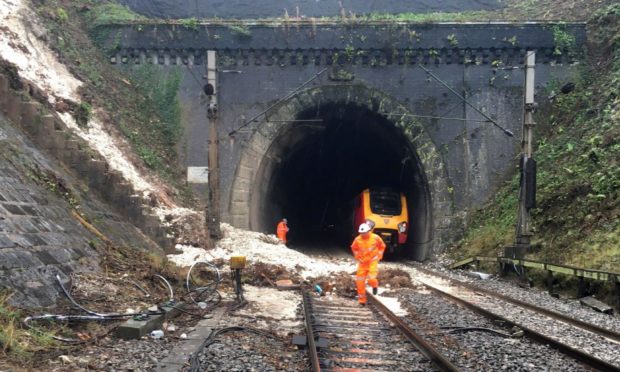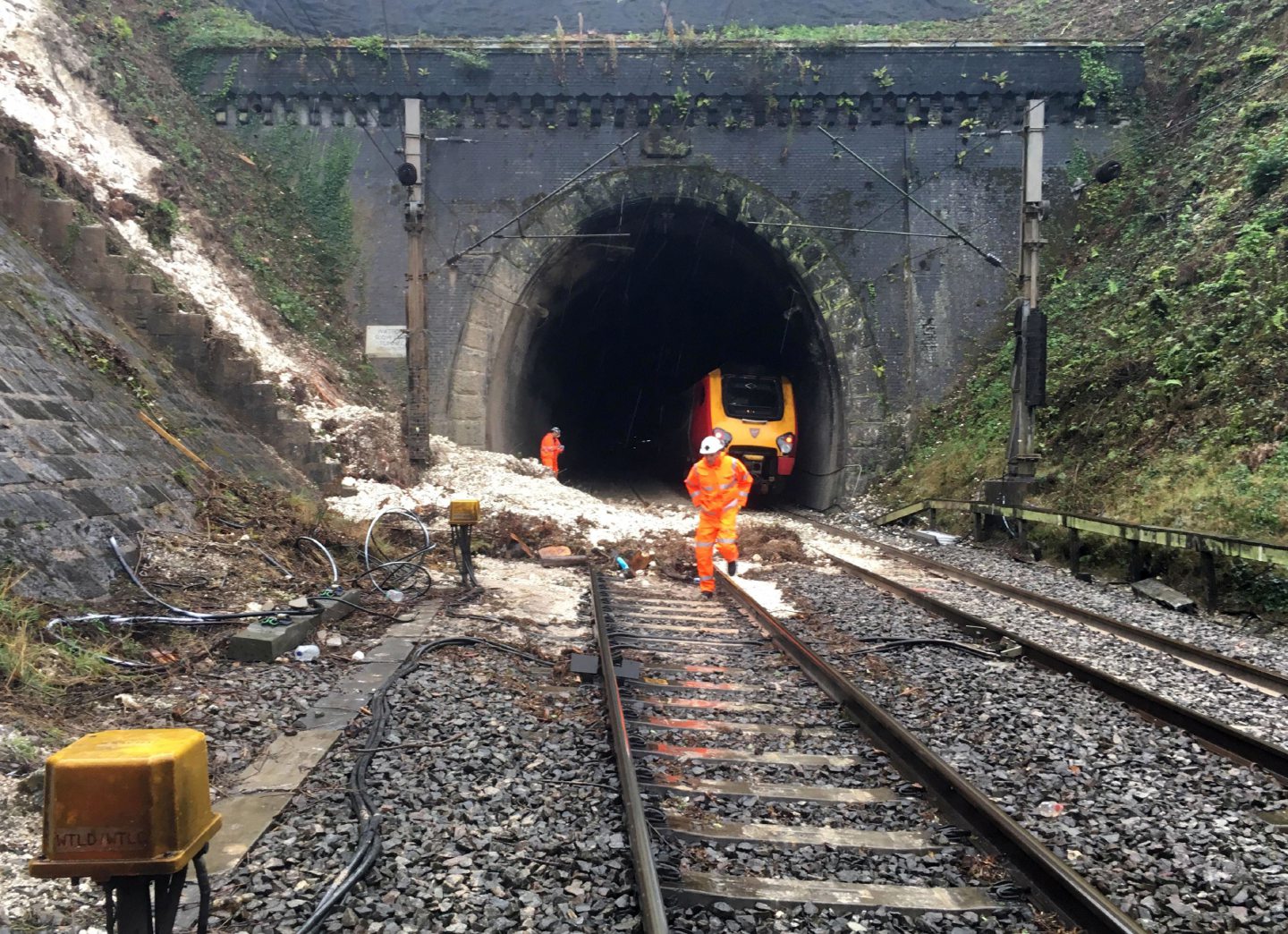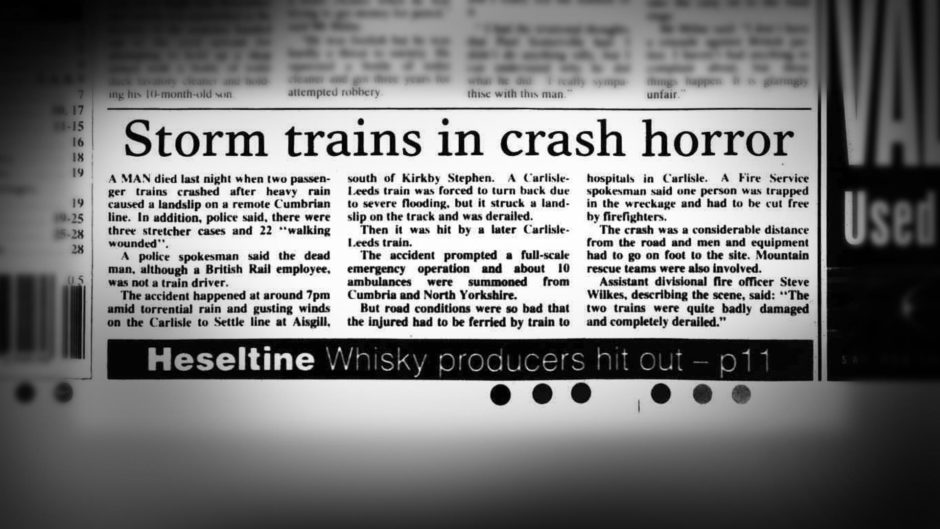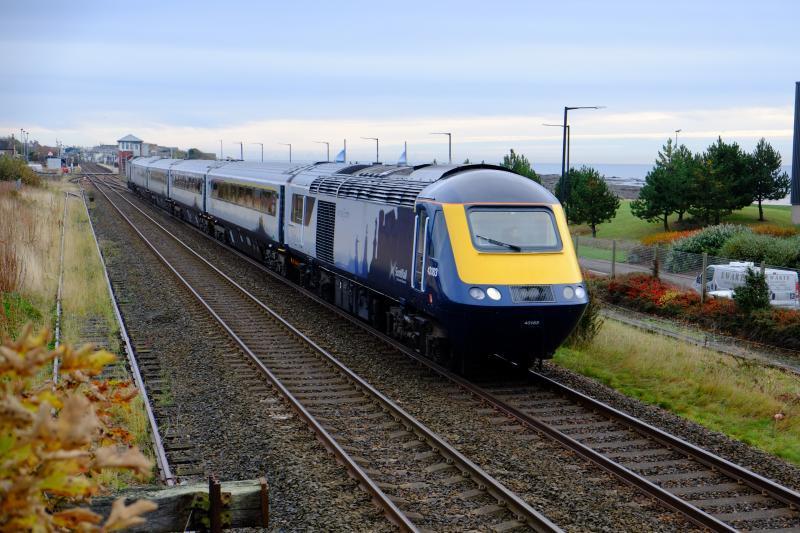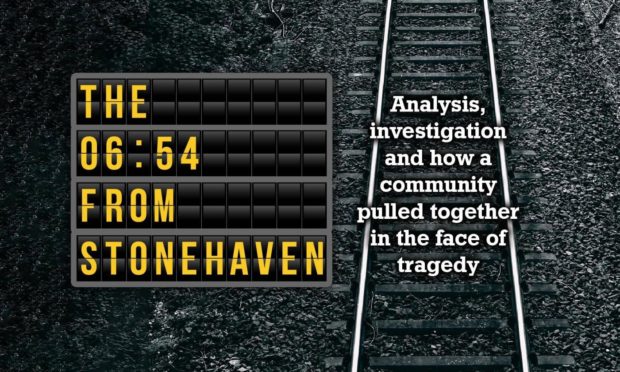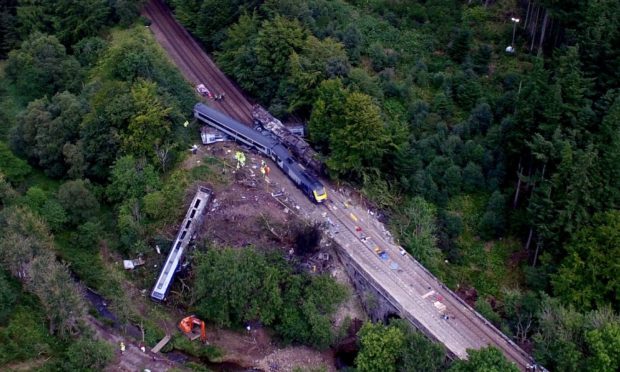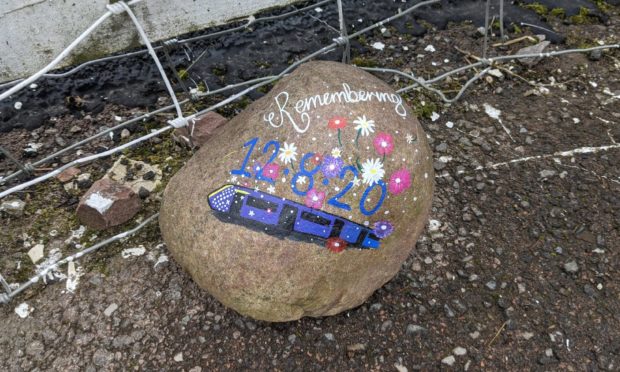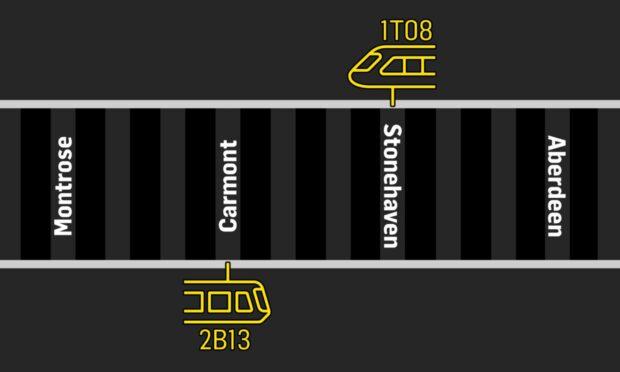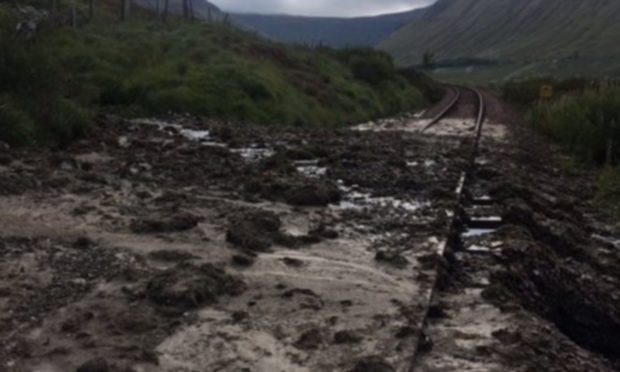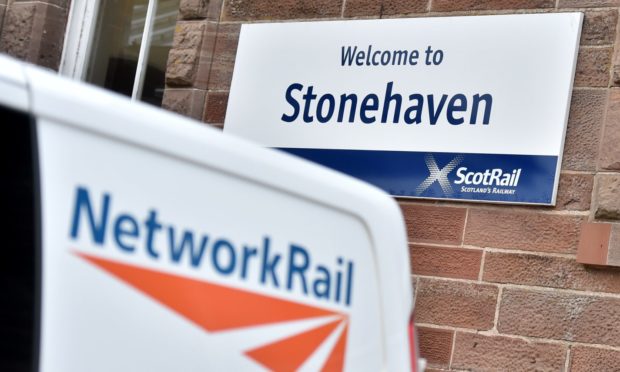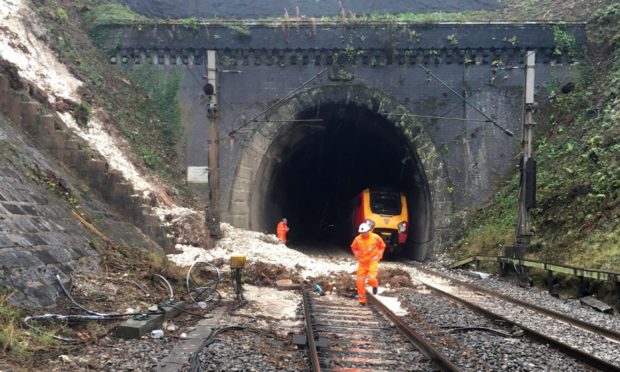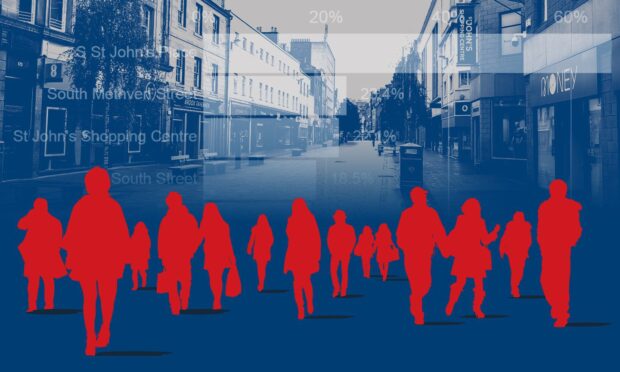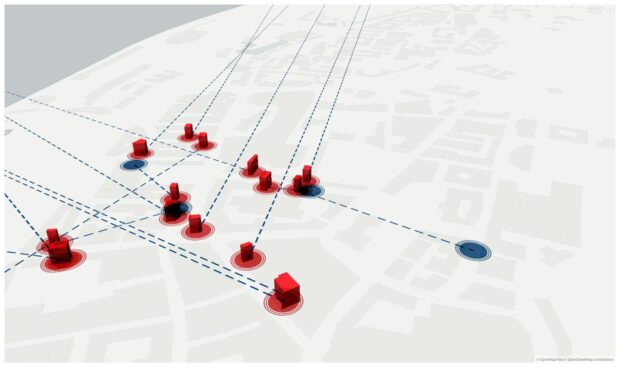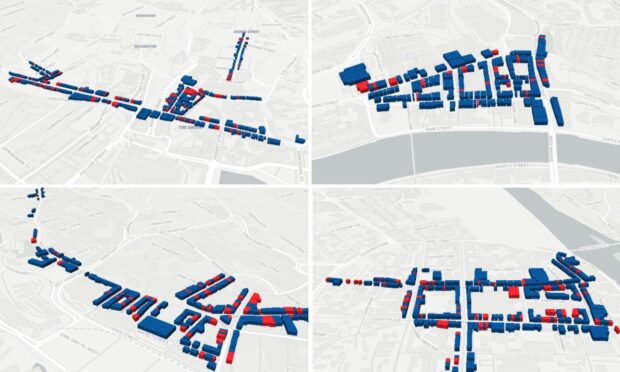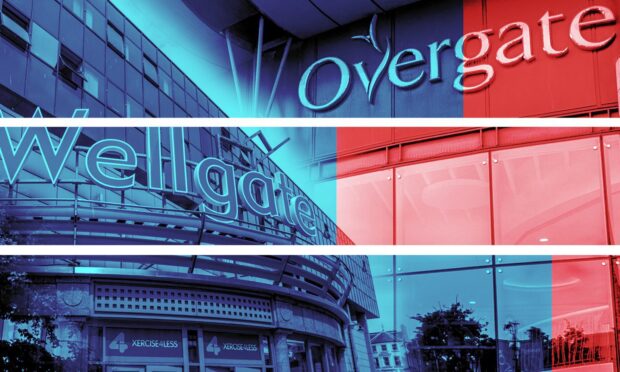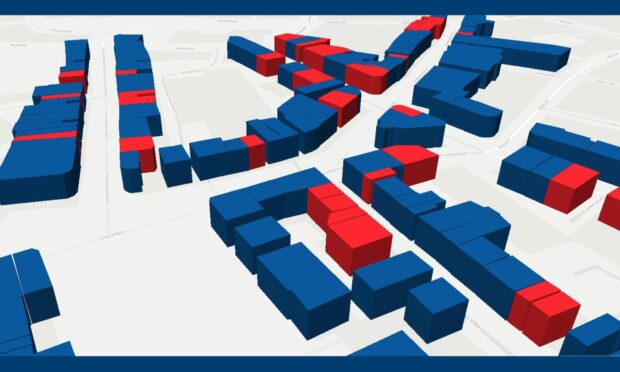It had been a full 13 years since any passengers or crew died in a train crash in Britain, and the shock of the derailment near Stonehaven resonated heavily throughout the local community and railway industry alike.
Official reports are yet to be released, but it appears that a series of disastrous circumstances combined to create the perfect storm on August 12, leading to the derailment which claimed the lives of three men.
The incident is somewhat of an anomaly in the typical world of train travel, where statistics show that travelling by train is ordinarily one of the safest ways to get around.
But though these deaths are the first passenger and crew fatalities seen on a train in the UK for more than a decade, the crash itself is one of many to be reportedly caused and aggravated by climate change, rising temperatures and intense rainfall.
Speaking in the aftermath of the tragedy, Prime Minister Boris Johnson said lessons will need to be learned from the accident to ensure British railways are safer and more resilient in the face of harsher weather.
We’ve rounded up key points to keep in mind.
What happened at landslip derailments in the past?
Corby
The last serious landslip to occur was in June 2019 when more than 500 passengers were stranded near Corby in Northamptonshire for seven hours after a train hit a landslide that had washed onto the tracks.
All passengers were transferred to a southbound to return to the nearest station, but this also became trapped by floodwater.
Though no one was injured, as the hours passed passengers became agitated because of “uncomfortable and deteriorating conditions” due to overcrowding on board. They were not rescued until 11.15pm – six hours after the collision.
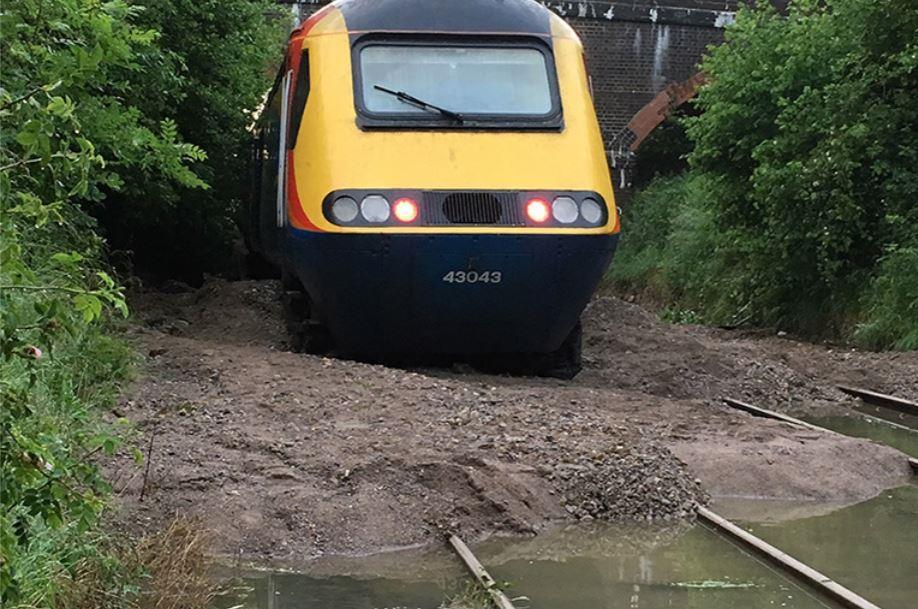 The incident triggered an official investigation which took nearly a year to complete.
The incident triggered an official investigation which took nearly a year to complete.
It concluded that the cutting slope had failed because it was not designed to cope with such large volumes of water.
Flood water had accumulated at the crest of the slope because two adjacent storage ponds had overfilled with water from a nearby brook.
A blockage at this brook caused water levels to rise and spill into the ponds, which had not been pumped down as they usually were after heavy rain, for nearly a month.
The banks of the ponds burst and water collected at the crest of the cutting slope just above the railway, causing the landslide.
The investigation also found three underlying causes: A lack of communication about flood management, the absence of an effective flood management system and a lack of action by Network Rail to reduce the risk of flooding there.
Several recommendations were made off the back of the report regarding the implementation of effective flood management procedures, though perhaps the most interesting recommendation was the second point.
It called for Network Rail to identify similar locations prone to critical flooding and review how it manages flood risk at each of those places.
This may explain why Network Rail inspected the Carmont site in May 2020 (when the Corby report was released) and again in June 2020, though found nothing to suggest imminent failure may occur.
Watford
In September 2016, a London Midland train was derailed following a landslide at Watford Junction.
A mere nine seconds after coming to a stop in a tunnel, the derailed train was stuck by another passenger train travelling in the opposite direction.
The driver of the second train had already received a radio warning and applied the brake, reducing the speed of impact.
So although both trains were significantly damaged, there were no serious injuries to passengers or crew.
However the official report counts this as a lucky escape.
Once again this landslip occurred during a period of exceptionally wet weather.
Water from nearby land flowed into the cutting close to the mouth of the tunnel and caused soil and rock to wash down onto the track.
The site had not been identified by Network Rail as being at risk of a flooding-induced landslip, despite such a landslip occurring at the same location in 1940, also causing a derailment.
Drawings from the 1940s relating to subsequent repairs of the slope were held in a Network Rail archive, but crucially were not available to Network Rail’s asset management team.
It was a complete coincidence that work was being carried out to strengthen the slopes along this stretch of railway at the time of the 2016 accident, though that project had nothing to do with improving drainage.
It’s common knowledge among industry experts that when British Rail’s long-standing soil mechanics and earthworks departments were sold off under privatisation during the 1990s, with them went many records – particularly concerning drainage – and invaluable personal knowledge of the railways.
Combine this with our rapidly changing climate and it’s been a steep learning curve for Network Rail.
What happened at fatal crashes in the past?
Today modern soil mechanics offer a wide range of science and technology which can predict vulnerabilities.
Perhaps this is best illustrated by the fact that Stonehaven rail crash is the first fatal accident due to a landslip since Ais Gill near Westmorland in 1995, marking 25 years of relative landslip safety.
At Ais Gill, a significant landslip caused a train to derail, sending it straight into the path of an oncoming train.
It was dark and raining heavily. The driver of the derailed train changed the vehicle’s lights from white to red to warn oncoming trains of the obstruction but no other action was taken.
Meanwhile a train was already travelling in the opposite direction and saw the red lights.
This driver applied the emergency break but there was no chance of stopping in time.
The collision killed the conductor of the derailed train, and seriously hurt a number of passengers.
The official inquiry concluded that the conductor of the derailed train had failed in his duty to protect the train in the event of an incident by laying down detonators and displaying a red flag one mile from the obstruction.
Approximately six minutes elapsed between the initial derailment and the subsequent collision, which investigators said was enough time to give a much greater warning to the second train.
However the inquiry noted the driver’s communications with the control centre at Crewe ended with control saying “we will take care of all of that, driver.”
This may have given the false impression that other trains in the vicinity would be warned appropriately, and so the guard set about tending to the needs of his passengers.
In recent years since this incident, the Office of Rail and Road has noted that, of all the dangers facing modern rail travellers, failed earthworks (due to heavy rainfall and flooding) are “now the largest single source of train accident risk to passengers”.
It appears that despite rising funding and improving technology, the risk of unpredictable, rapid landslips will remain for the foreseeable future.
How safe are the British Rail Mark 3 carriages?
The British Rail Mark 3 is a type of passenger carriage which was developed in response to growing competition from airlines and cars in the 1970s.
The first coaches built were for the prototype High Speed Train (now known as the InterCity 125) in 1972.
Production coaches entered real-time service for the first time between 1975 and 1988, and multiple-unit designs based on the original Mark 3 body continued to be built until the early 1990s.
The bodyshell of the Mark 3 carriage is set at a standard 75ft (23m) long.
An important advance over its predecessor, the Mark 2, was the adoption of secondary air suspension which offered a smoother ride and a maximum speed of 125mph.
Most of the surviving fleet of the Mark 3 and its derivatives are still in service on the British railway network in 2020, though have since been refurbished several times.
However modern-day experts have questioned the crashworthiness of the Mark 3 carriages in comparison to newer trains.
Most of the criticism stems from the age of the trains, and it’s true – many of the Mark 3 carriages on British railways are in excess of 40 years old.
One expert told us that: “On the same week ScotRail announced that they were going to be refurbishing a number of [Mark 3] sets, Great Western donated three [of the same carriages] to a museum.”
It might seem odd that ScotRail are using carriages which are nearly half a century old, but in the world of railways this sort of thing is common.
The routes which are the busiest and cover the most ground, such as trains coming in and out of London and Manchester, get the newest trains, and when these trains are replaced, the old models are given to an operator with a less demanding route.
This cascade effect means the same trains can be running on British rails for many, many years for various different companies.
The Mark 3s currently operated by ScotRail were formerly owned by Great Western Railway, where they served up to 40 years of service at a maximum speed of 125mph.
ScotRail then extensively refurbished each of the carriages and put them back into use on Scottish lines at a lower speed of 100mph.
Others disagree that the age of the carriages affects their crashworthiness, and maintain that the Mark 3 continues to have a reliable and safe design just as it did when it was first built.
Historically the design is known for having good end-to-end strength, meaning that if the carriage hit something head on it wouldn’t crumple easily.
However its weaker spots are the top and bottom/roof and floor of the carriage, which means that if something landed directly on top of it, it wouldn’t fare so well.
That being said, the Oxshott A244 Bridge Incident, in 2010 saw a 24-tonne cement mixer lorry fall fifty metres directly onto a Mark 3-based Class 455 train without any fatalities, proving the significant strength of the carriages.
Other experts maintain older models should be automatically taken out of service.
They argue that even the most ultra-modern designs are not indestructible in the face of freak accidents.
Can technology help when it comes to safety on the railways?
Remote monitoring technologies are gaining traction in the industry as one of the most efficient ways to prevent damage caused by extreme weather.
In the past these devices had been eschewed in favour of more traditional methods but it seems all that may be about to change.
The Office of Rail and Road recently wrote in a study that “Network Rail must focus on improving identification of imminent failure by means of remote monitoring and on refining the measures it has to respond to forecasts of extreme conditions.”
The idea would be to use cameras, drones and satellites in an attempt to safeguard against the effects of natural hazards.
This is something Network Rail seems open to doing, stating that industry rules for reporting and responding to adverse rainfall will be “improved and strengthened”, and that the firm is willing to try anything which may help signallers better manage services during bad weather.
Currently Network Rail’s collaboration with the Met Office, marine, coastal and geotechnical engineers, and railway consultants continues to be one of its most invaluable assets when it comes to designing the most up-to-date resilience plans.
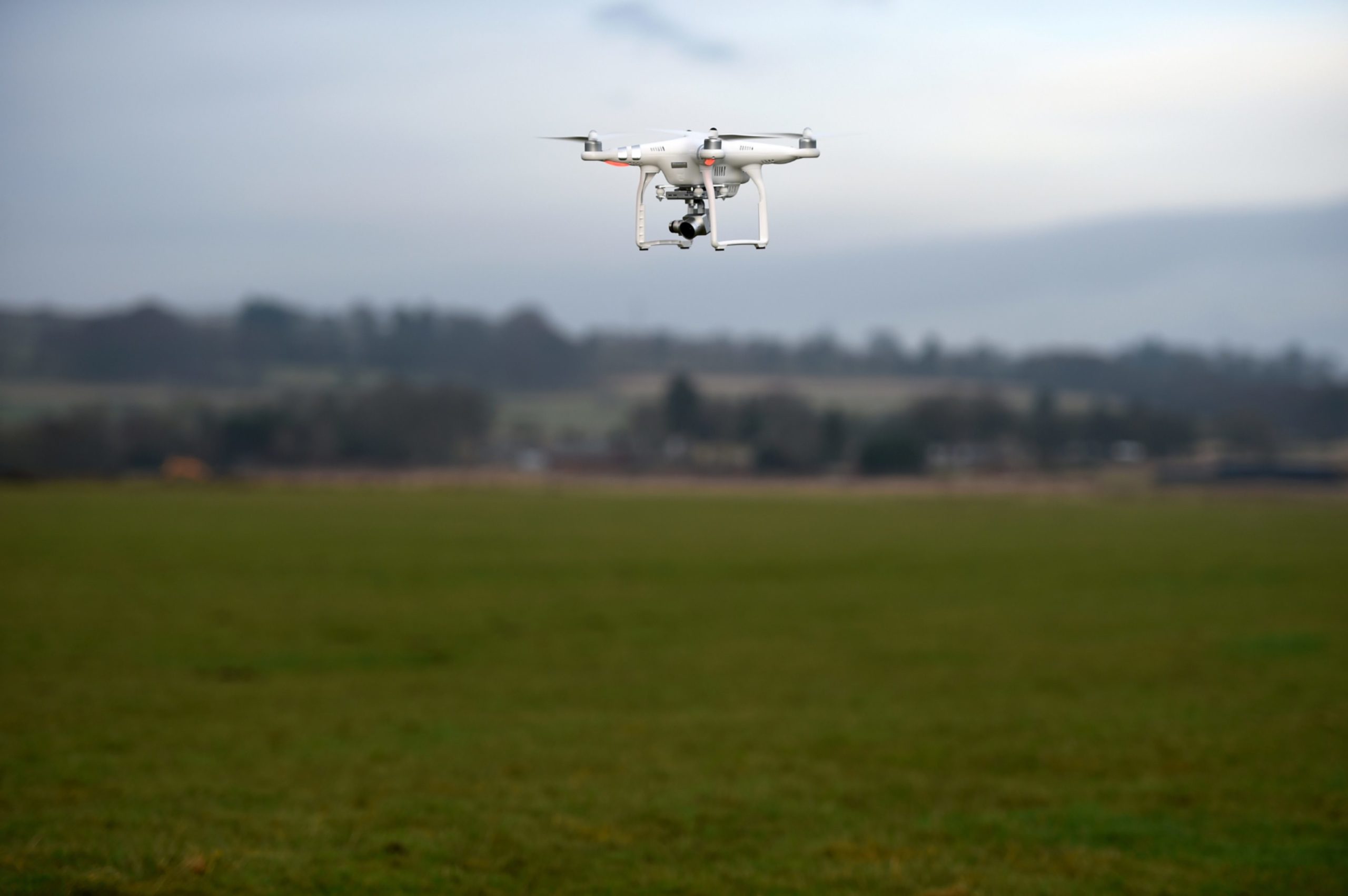
But the company is also developing what it calls cutting-edge techniques for monitoring and managing areas at risk, and is using drones as part of its project to digitize the country’s rail network in 3D, to enable better planning of track maintenance and renewal
Along with other European countries, the UK is also part of a major project which studies ways to use new technologies, such as drones, sensors, artificial intelligence, optical and radar satellites and remote monitoring equipment to improve weather forecasts, as well as identify areas of intervention and potential faults in rail systems and tracks.
The project’s main area of focus has been on the role these bits of technology could play in maintaining safety and efficiency across Europe’s railways, specifically in relation to natural risks like landslips.
Though when this may be implemented is not yet clear.
